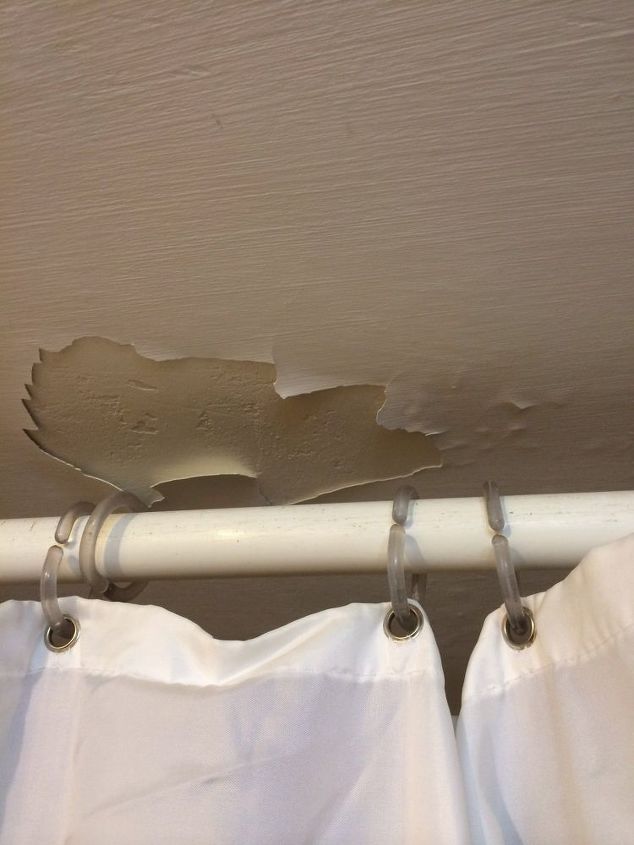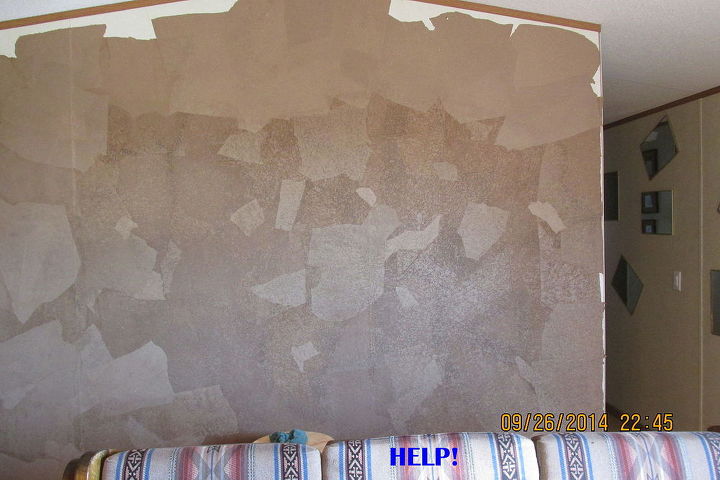Old walls made with wood slacks need repair

-
They are called slats. They are often made of a very hard wood like poplar. In order to keep from breaking the plaster between them you need to drill screws into the wall to hang things
 Margi Chambers
on Apr 07, 2016
Helpful Reply
Margi Chambers
on Apr 07, 2016
Helpful Reply -
-
Do a search at the top of the page "repair plaster walls " and you will get a few different solutions. I know your aggravation, we are dealing with MANY cracks also. Good luck.
 Marj
on Apr 07, 2016
Helpful Reply
Marj
on Apr 07, 2016
Helpful Reply -
-
I have a home built in 1937 with six inch plaster walls. I learned this trick from my father-in-law. Always apply painter's tape to the wall on the spot where you intend to pound a nail. Always use a very sharp pointed nail. With just one whack as he put it "there will be no crack." Always use real plaster patch never spackling compound to patch holes. I use an old credit card to smooth out a small plaster patch. Larger holes need more work. A mesh tape must be applied to the wall. Check the Internet for this procedure. I used to be a cake decorator. So I figured out that if I can frost a cake I can plaster a few holes in the wall.
 Nancy
on Apr 07, 2016
Helpful Reply
Nancy
on Apr 07, 2016
Helpful Reply -
-
I have a tip for where that crack on the ceiling that opens every winter or summer from contracting. silicon or something plyable.
 Margaret
on Apr 07, 2016
Helpful Reply
Margaret
on Apr 07, 2016
Helpful Reply- See 1 previous
-
-
Drill holes and use a wall anchor.
 Johnchip
on Apr 07, 2016
Helpful Reply
Johnchip
on Apr 07, 2016
Helpful Reply -
-
I have plaster walls & ceilings. I know your pain. Plaster patch (the real stuff - not the pink stuff) is key. Also, when putting holes in the wall I pre-drill with a very small drill bit in order to eliminate a chunk coming out! Nancy is right in her suggestions, too!
 Jane Harriss Naus
on Apr 07, 2016
Helpful Reply
Jane Harriss Naus
on Apr 07, 2016
Helpful Reply -
-
It would be a bit of a cost but replacing the walls with drywall will certainly help! ALso...you should have your homes electrical checked out by an electrician to make sure it is still good. If it has never been replaced, which is what yours sounds like, you should definitely replace it! It is a major fire hazard!
 Mcgypsy9
on Apr 07, 2016
Helpful Reply
Mcgypsy9
on Apr 07, 2016
Helpful Reply -
-
Yup, feel for you. I have a house built in 1926 with lath and sculptured textured walls. Nancy's recommendation is what I have done over the years. Start with an area that will be hidden by furniture to get your technique and process in place then move on to more visible spots.
 Naomie Moore aka baileyanddaisey, Castaic CA
on Apr 07, 2016
Helpful Reply
Naomie Moore aka baileyanddaisey, Castaic CA
on Apr 07, 2016
Helpful Reply -
-
Hi, I have the same type of walls and have the same type of walls. Years ago I had no money and where my toilet roll holder was there was a big hole all the way through to the lath. I used a combination of a watered down solution of wall filler soaked in newspaper and gently put it over the hole then when that is set another layer building up only really thin layers then a couple of coats of wall filler after. This is the best part of my wall now it has been sanded and painted. Not sure what the name of the wall filler is in America though sorry.
 Sandy Slade
on Apr 07, 2016
Helpful Reply
Sandy Slade
on Apr 07, 2016
Helpful Reply -
-
Probably plaster. Cut out bad areas and replace with drywall. Any good painter can make look like new
 G
on Apr 07, 2016
Helpful Reply
G
on Apr 07, 2016
Helpful Reply -
-
Put painter's tape on the wall around the area you want to nail in to. Put your nail in then remove the tape. I love plaster walls. I grew up in NYC, then bought an old house in NJ. 😊
 Janis Herger Hilton
on Apr 07, 2016
Helpful Reply
Janis Herger Hilton
on Apr 07, 2016
Helpful Reply -
-
Use screws instead of nails. You will have less problem with the plaster coming away from the lathe. You can repair your holes with patching plaster which is different than sparkle or drywall compound .
 Teri
on Apr 08, 2016
Helpful Reply
Teri
on Apr 08, 2016
Helpful Reply -
Related Discussions
How to get rid of mice?
We seem to have some unwelcome Mickeys and Minnies in our house. What is the best way to get rid of them?
How to remove popcorn ceiling with asbestos?
I want to remove my popcorn ceiling, but it has asbestos in it. How do I go about this safely?
How to caulk baseboard gaps?
How do I fill gaps at baseboard, should I caulk? If so, does anyone know how to caulk baseboards?
How to fix squeaky hardwood floors?
How do I fix squeaky hardwood floors?
Water damage on bathroom ceiling
I am about to patch up this water damage on a low bathroom ceiling. What can i paint/seal the entire ceiling with to minimize future water damage? the ceiling is very... See more
Brown paper floor/wall help
I have purchased a brown roll of paper because I wanted a consistent "vein" look through out the walls and the brown paper bags I was getting would sometimes be "vein... See more





